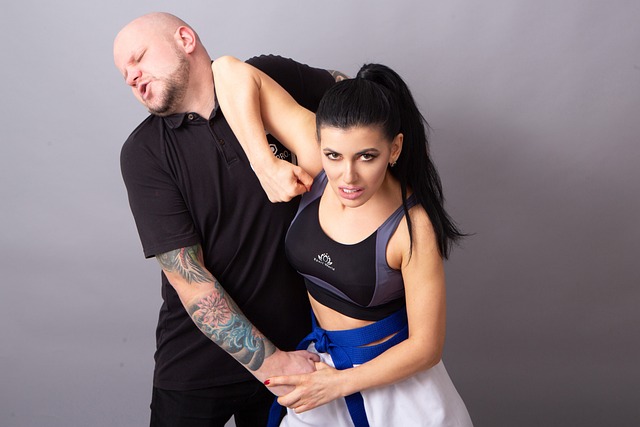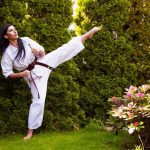
What is The Best Martial Art for Self-Defense?
The term “martial arts” can refer to any of the numerous combat practices and systems from around the world. But when it comes to self-defense, it is important to know which martial arts are best suited for defending yourself or your loved ones in dangerous situations. Self-defense encompasses more than just physical skills; it also involves an understanding of how to assess a situation, use the environment to your advantage, and respond appropriately.
In this article, we will explore what makes certain martial arts better for self-defense than others and discuss key factors to consider when deciding which style is best for you or your family.
Table of Content
Benefits of Martial Arts for Self Defense
Martial arts offer numerous benefits for self-defense beyond physical techniques. Practicing martial arts can improve confidence, discipline, and mental focus. It also promotes physical fitness, flexibility, and coordination. Moreover, learning self-defense techniques can help individuals develop a sense of empowerment, enabling them to handle dangerous situations more effectively.
Types of Martial Arts for Self Defense
When it comes to self-defense, the world of martial arts offers a vast array of disciplines, each with its unique focus, techniques, and philosophy. From striking arts that emphasize powerful punches and kicks to grappling-based systems that focus on ground fighting and submissions, there is a martial art suited to every individual’s preferences and needs.
Traditional Martial arts
Traditional martial arts not only provide effective self-defense techniques but also carry cultural and historical significance, often passing down through generations. Each of these styles has its unique philosophy, training methods, and principles, contributing to the rich tapestry of the martial arts world. Traditional martial arts have deep historical roots and have been practiced for centuries.
Here is a list of some well-known traditional martial arts from different parts of the world:
- Karate: Originating in Japan, Karate emphasizes striking techniques using punches, kicks, knees, and elbows.
- Kung Fu (Chinese Martial Art): An umbrella term for various Chinese martial arts styles that include a wide range of techniques, forms, and philosophies.
- Tae Kwon Do: Originating in Korea, Tae Kwon Do is known for its dynamic kicking techniques and high-flying kicks.
- Judo: Developed in Japan, Judo is a grappling martial art that focuses on throws and takedowns.
- Aikido: A non-aggressive Japanese martial art that uses an opponent’s energy to redirect and neutralize attacks.
- Kendo: A Japanese martial art that practices swordsmanship using bamboo swords (shinai) and protective armor (bogu).
- Jujutsu (Jiu-Jitsu): A Japanese martial art that encompasses various grappling and close-quarters combat techniques.
- Taekkyeon: A traditional Korean martial art that emphasizes fluid and rhythmic movements.
- Muay Boran: The ancient predecessor of Muay Thai from Thailand, focusing on various striking, clinch, and grappling techniques.
Modern Martial arts
It’s important to note that the development of modern martial arts continues, and new systems may emerge as practitioners and instructors refine and adapt techniques to suit contemporary needs and challenges. Each martial art has its unique philosophy, techniques, and training methods, catering to diverse interests and preferences among martial artists and practitioners.
Here is a list of some modern martial arts, which have been developed or refined in more recent times:
- Krav Maga: A practical and efficient self-defense system developed in Israel, combining elements from boxing, wrestling, judo, and karate.
- Systema: A Russian martial art that emphasizes fluidity, adaptability, and using the body’s natural movements to respond to attacks.
- Keysi Fighting Method (KFM): A self-defense system developed in Spain, focused on close-quarter combat and multiple opponent scenarios.
- Mixed Martial Arts (MMA): A modern combat sport that combines techniques from many martial arts, including striking, grappling, and submissions.
- Brazillian Jiu-Jitsu (BJJ): A grappling-based martial art that focuses on ground fighting and submissions.
- Taekwondo ITF: A traditional form of Taekwondo that emphasizes self-defense techniques and patterns.
- Hapkido: A Korean martial art that emphasizes joint locks, throws, and redirection of an opponent’s energy.
- Muay Thai: (Thai Boxing) often referred to as “The Art of Eight Limbs,” is a dynamic and powerful striking-based martial art originating from Thailand.
- Boxing: Also known as Western Boxing or the “Sweet Science,” is a martial art and combat sport that traces its origins back to ancient civilizations.
The Impact of Mixed Martial Arts
The success of the Ultimate Fighting Championship (UFC) has had a significant impact on the world of combat sports. MMA’s rise in popularity has led to the growth of gyms and training centers worldwide, with aspiring fighters seeking to hone their skills in various disciplines. Moreover, the sport’s appeal transcends national borders, fostering a truly global audience and attracting fans from diverse backgrounds.
The impact of MMA on martial arts films has been significant, revolutionizing fight choreography, character portrayals, and the overall approach to action sequences. By drawing inspiration from the realism and excitement of MMA, filmmakers have brought a new level of authenticity and engagement to martial arts films, making them more appealing to both traditional martial arts enthusiasts and new audiences alike.
Finding the right martial arts school for self-defense
Finding the right martial arts school for self-defense is a crucial step towards empowering yourself with the knowledge and skills to protect your safety. With so many schools and styles available, it’s essential to consider various factors to ensure you choose a reputable and effective training environment.
Here are some tips for finding the best martial arts school for self-defense:
- Research Different Martial Arts Styles: Begin by researching various martial arts styles that are known for their effectiveness in self-defense. Styles like Krav Maga, Brazilian Jiu-Jitsu, Muay Thai, and certain forms of Karate are often favored for their practicality and real-world applications.
- Check Credentials and Instructors’ Background: Look for schools with certified and experienced instructors who have a solid background in self-defense training.
- Visit Multiple Schools: Visit several martial arts schools in your area to observe classes, meet instructors, and get a feel for the training environment. Take note of the school’s cleanliness, safety measures, and level of professionalism.
- Observe Class Atmosphere: Pay attention to the class atmosphere and how students interact with each other and their instructors. A positive and supportive environment can enhance the learning experience and boost confidence.
- Student Reviews and Testimonials: Check online reviews and testimonials from current and past students to gauge their experiences and satisfaction with the training provided.
- Trial Classes: Many schools offer trial classes or introductory programs. Take advantage of these opportunities to participate in a class and see if the style and teaching approach align with your goals.
- Safety Measures: Ensure that the school prioritizes safety during training. Inquire about the use of protective gear during sparring sessions and how they manage potential injuries.
- Class Schedule and Location: Consider the school’s class schedule and location to ensure it fits with your availability and convenience. A school that is close to your home or workplace may encourage consistent attendance.
- Cost and Contract Terms: Understand the school’s pricing structure and any contract terms before committing.
Remember, finding the right martial arts school is an important investment in your safety and development. Take your time to research and visit various options to ensure you select a school that aligns with your goals and provides effective self-defense training.
Conclusion
In conclusion, choosing the right martial art for self-defense should depend on a variety of factors including style, intensity level, and physical ability as well as cost & availability. The most popular martial arts styles for self-defense include Karate, Tae Kwon Do, Jiu-Jitsu, Muay Thai and Kickboxing, Aikido, Systema, Mixed Martial Arts, Boxing, and Brazilian Jiu-Jitsu. With the proper knowledge and practice of martial arts skills for self-defense, you can protect yourself or your family in dangerous situations.


